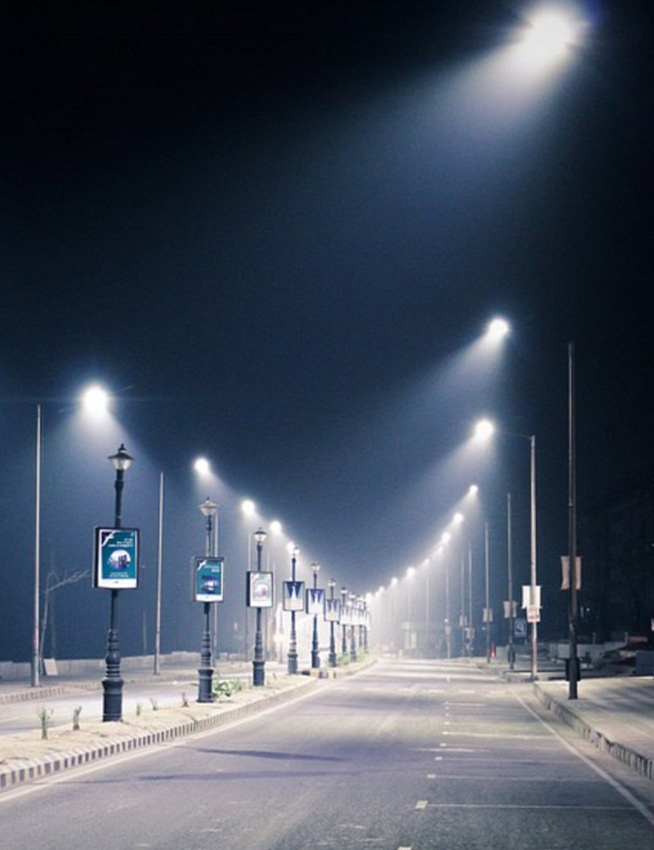The design and placement of street lights are critical aspects of urban planning, aimed at enhancing safety, aesthetics, and environmental considerations. Proper street light design not only ensures effective illumination but also contributes to the overall ambiance and functionality of urban spaces. In this discussion, we will explore four key perspectives on street light design and placement: traffic management, pedestrian safety, aesthetic considerations, and dark sky preservation.

Traffic management perspective: Optimizing street light placement for traffic safety and guidance
Street light placement plays a vital role in managing traffic flow and enhancing road safety:
Intersection Lighting: Placing street lights at intersections is crucial to providing clear visibility of traffic signals, pedestrian crossings, and other critical traffic management elements.
Roadway Illumination: Street lights should be strategically positioned to illuminate roadways evenly, minimizing dark spots that could pose hazards to drivers and pedestrians.
Curve and Bend Visibility: Proper street light placement on curves and bends improves driver visibility, reducing the risk of accidents, particularly on winding roads.
Traffic Sign Illumination: Adequate lighting around traffic signs ensures their visibility at night, guiding drivers accurately and enhancing overall road safety.
Pedestrian safety perspective: Illuminating crosswalks and pedestrian pathways for safer walking
Street light design should prioritize the safety of pedestrians, ensuring well-lit crossings and pathways:
Crosswalk Illumination: Placing street lights near crosswalks and zebra crossings enhances pedestrian visibility and reduces the likelihood of accidents involving motorists and walkers.
Sidewalk Lighting: Properly designed street lights along sidewalks create a safer environment for pedestrians, encouraging nighttime walking and promoting active lifestyles.
Public Transportation Stops: Illuminating public transportation stops improves safety for passengers, making them more visible to drivers and enhancing overall accessibility.
Aesthetic perspective: Street light designs that complement urban landscapes and historical areas
Street light design can contribute to the visual appeal and character of urban spaces, particularly in historical and architectural heritage areas:
Architectural Harmony: Street lights should be selected and designed to complement the architectural style and heritage of the surrounding buildings, blending harmoniously with the overall urban landscape.
Decorative Elements: Ornamental street light designs add a touch of elegance and uniqueness to streetscapes, enhancing the aesthetic appeal of the area.
Color Temperature Considerations: The color temperature of street lights should be carefully chosen to create a welcoming atmosphere while preserving the distinct characteristics of the urban setting.
Dark sky perspective: Minimizing light pollution to preserve natural night skies and wildlife habitats
Street light placement and design should aim to minimize light pollution and its adverse effects on the environment:
Full Cutoff Fixtures: Using full cutoff fixtures helps direct light downward, reducing upward light leakage and minimizing light pollution.
Smart Lighting Controls: Employing smart lighting controls allows for adaptive lighting, adjusting brightness levels based on traffic flow and specific nighttime needs, further reducing unnecessary light emissions.
Natural Habitats Protection: Avoiding excessive lighting in natural areas preserves wildlife habitats and prevents unnecessary disruptions to nocturnal animals.
Community Awareness: Raising awareness about the importance of dark skies and light pollution among communities can foster collective efforts to implement responsible street light design.
In conclusion, the design and placement of street lights play a crucial role in urban planning, with a focus on safety, aesthetics, and environmental conservation. Street light placement should prioritize traffic management by ensuring optimal visibility of intersections, roadways, and traffic signs. For pedestrian safety, well-lit crosswalks, sidewalks, and public transportation stops are essential. Aesthetically, street light designs should harmonize with the architectural character of urban spaces, contributing to the overall appeal of the area. Lastly, a responsible approach to street light design must consider dark sky preservation, reducing light pollution to protect natural night skies and wildlife habitats. By considering these perspectives, urban planners and policymakers can create well-lit, appealing, and sustainable urban environments that cater to the needs of residents while preserving the beauty and biodiversity of the natural world.








